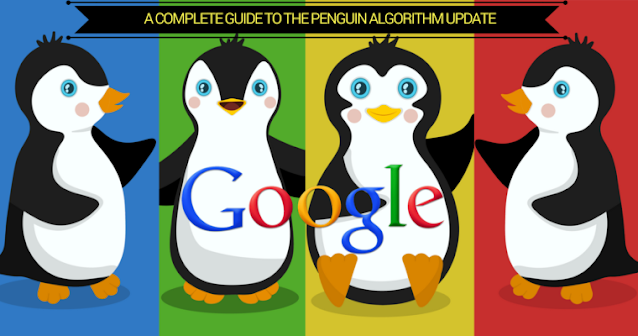As Google targeted webspam and manipulative link building strategies, the Penguin algorithm upgrade had a significant impact on SEO. Here's the whole tale.
Google's "webspam algorithm upgrade" was announced in 2012, and it targeted link spam and manipulative link building tactics.
Through a tweet from Matt Cutts, the head of the Google webspam team at the time, the webspam algorithm became known (officially) as the Penguin algorithm update. While Google has given the algorithm the name Penguin, no one knows where the term comes from.
The Panda algorithm got its name from one of the primary engineers who worked on it, and Penguin is likely to have come from the same place. One of my favourite Penguin naming ideas is that it's a nod to DC's Batman's The Penguin.
When Google crawled, indexed, and assessed a webpage prior to the Penguin algorithm, link volume had a bigger role in determining its score.
This meant that when these ratings were used to rank websites for search results pages, certain low-quality websites and pieces of content appeared in more prominent locations than they should have.
Why Did Google Penguin Become Necessary?
Penguin was an extension and addition to Google's armoury in the fight against low-quality content, which began with the Panda algorithm.
Penguin was Google's response to the growing practise of using black hat link building techniques to manipulate search results (and ranks). During his presentation at the SMX Advanced 2012 conference, Cutts said:
We look at it something designed to tackle low-quality content. It started out with Panda, and then we noticed that there was still a lot of spam and Penguin was designed to tackle that.
The goal of the algorithm was to have more control over a variety of black hat spamming techniques and minimise their efficacy.
Penguin attempted to ensure that natural, authoritative, and relevant links rewarded the websites they linked to, while manipulative and spammy links were degraded, by better understanding and processing the types of links domains and webmasters were gaining.
Penguin is only concerned in the incoming links to a website. Google only looks at links that point to the site in question and ignores any links that point away from it.
The Impact of the First Launch
According to Google's own estimates, Penguin affected more than 3% of search results when it initially introduced in April 2012.
In May 2013, Penguin 2.0, the algorithm's fourth upgrade (counting the first launch), was launched, affecting around 2.3 percent of all queries.
Updates and Refreshes to Google Penguin
Since its inception in 2012, the Penguin algorithm has undergone a lot of modifications and refreshes, as well as probably a number of more tweaks that have gone down in history as undiscovered algorithm updates.
Google Penguin 1.1 was released on March 26, 2012.
This wasn't a change to the algorithm itself, but it was the first time the data within it had been refreshed.
In this case, websites that were first impacted by the introduction and were diligent in cleaning up their link profiles saw some recovery, while those who weren't captured by Penguin the first time around suffered an impact.
Google Penguin 1.2 was released on October 5, 2012.
It was time for another data refresh. It had an impact on both domestic and worldwide enquiries in the English language.
Google Penguin 2.0 was released on May 22, 2013.
This was a more advanced version of the Penguin algorithm that altered how the algorithm affected search results.
Penguin 2.0 had a 2.3 percent impact on English inquiries, with other languages being affected accordingly.
This was also the first Penguin update to examine for evidence of link spam directed at the website outside the homepage and top-level category pages.
Google Penguin 2.1 was released on October 4, 2013.
Penguin 2.0 (2.1) received its only update on October 4 of the same year. About 1% of searches were affected.
While Google has not provided an official explanation, data suggests that the 2.1 data refresh improved how deep Penguin looked into a page, crawled deeper, and ran additional research to see whether spammy links were there.
Google Penguin 3.0 was released on October 17, 2014.
But this was labelled as a major update, it was actually a data refresh that allowed people who had been impacted by prior updates to recover, while many others who had continued to use spammy link tactics and had evaded the previous affects had an impact.
Googler Pierre Far confirmed this in a Google+ post, stating that the change will take a "few weeks" to fully roll out.
According to Far, the upgrade affected fewer than 1% of English search queries.
Google Penguin 4.0 was released on September 23, 2016.
The final Penguin algorithm update was released nearly two years after the 3.0 refresh.
Penguin became a part of the core algorithm in this iteration, which was the most significant change.
When an algorithm is elevated to the core, it does not imply that its functionality has changed or will change drastically in the future. It means that Google's perspective of the algorithm, not the algorithm itself, has changed.
Penguin now examines websites and links in real time while operating alongside the core. As a result, you can witness (relatively) immediate results from your link-building or repair efforts.
The new Penguin was also not stingy with link-based penalties, instead devaluing the links themselves. This is in contrast to prior Penguin incarnations, which penalised the negative.
However, according to studies and personal experience, algorithmic penalties for backlinks still exist.
This opinion is reinforced by data released by SEO professionals (e.g., Michael Cottam), as well as seeing algorithmic downgrades removed using disavow files following Penguin 4.0.
Downgrades in Google Penguin's Algorithm
Soon after the Penguin algorithm was released, webmasters and brands who had utilised deceptive link building tactics or stuffed their backlink profiles with a large number of low-quality connections saw a drop in organic traffic and ranks.
Some Penguin downgrades were partial, affecting only specific keyword groups that had been excessively spammed and over optimised, such as major items and, in some cases, brand.
Experiments and analysis suggest that utilising a 301 or 302 redirect won't stop Penguin from working, and John Mueller verified in the Google Webmasters Forum that employing a meta refresh from one site to a new domain can also cause issues.
In general, we recommend not using meta-refresh type redirects, as this can cause confusion with users (and search engine crawlers, who might mistake that for an attempted redirect).
Penguin Recoveries on Google
The disavow tool has long been a valuable tool for SEOs, and that
hasn't changed now that Penguin is part of the core algorithm.
As you might anticipate, studies and hypotheses have been published claiming that disavowing links does nothing to help with link-based algorithmic downgrades and manual actions, but this hypothesis has been openly debunked by Google representatives.
However, Google advises that when dealing with link spam, the disavow tool should only be used as a last resort, as disavowing a link is a lot easier (and has a faster effect) than submitting reconsideration requests for genuine links.
What Should a Disavow File Contain?
A disavow file is a file that you send to Google that advises them to ignore all of the links in the file so they won't affect your site. As a result, negative links will no longer cause negative ranking issues for your site, such as Penguin, but it also means that any high-quality links you mistakenly placed in your disavow file will no longer improve your rating.
Unless they are simply for your reference, you do not need to include any notes in your disavow file. It's acceptable to merely include the links and leave it at that.
Google will send you a confirmation once you've uploaded your disavow file. However, while Google will analyse it quickly, those links will not be immediately discounted. As a result, submitting the repudiation on your own will not result in an immediate recovery.
Google will still need to crawl those specific links you provided in the disavow file, but the disavow file will not push Google to do so.
Also, there's no way to tell which connections have been rejected and which haven't because Google will include both in your Google Search Console linking report.
If you've already sent Google a disavow file, they'll replace it with your new one rather than adding to it. As a result, it's critical to double-check that any previously disavowed links are still included in your new disavow file. In Google Search Console, you may always download a copy of the most recent disavow file.
Individual Links versus. Domains for Disavowal
Instead of disavowing individual links, it is recommended that you disavow links on a domain level.
There will be instances where you will want to disavow certain links, such as on a large site with a mix of quality and bought connections.
However, you can execute a domain-based disavow for the vast majority of links.
For the link to be discounted on your site, Google simply needs to crawl one page on that site.
When you use domain-based disavows, you don't have to worry about whether your links are indexed as www or non-www, because the domain-based disavow will take it into account.
Is There No Hope for Penguins?
Even after going to considerable pains to clean up their link profiles, webmasters may not notice an increase in traffic or rankings.
This could be due to a variety of factors, including:
- The initial traffic and ranking bump witnessed prior to the algorithmic penalty was unwarranted (and most likely temporary) and was caused by poor backlinks.
- When links are removed, no effort is taken to replace them with more valuable backlinks.
- Not all negative backlinks have been disavowed, nor has a sufficient percentage of negative backlinks been removed.
- The problem wasn't caused by a link in the first place.
When you recover from Penguin, don't expect your ranks to return to where they were prior to Penguin, and don't expect it to happen quickly. Many website owners believe that once Penguin is dropped, they will immediately resume ranking at the top for their top search queries.
To begin with, some of the links you disavowed were most likely contributing to an artificially high rating, so don't expect those ranks to return to their previous levels.
Second, because many site owners have difficulty determining the quality of connections, some high-quality links, which were contributing to higher ranks, are inevitably disavowed in the process.
Add in the fact that Google's ranking algorithm is continuously changing, so elements that previously benefited you may no longer do so, and vice versa.
Myth: You Can't Get Rid of Penguins
Yes, you can get back on your feet after Penguin.
It is doable, but it will necessitate some prior expertise dealing with Google's capricious algorithms.
The best strategy to get rid of Penguin's bad impacts is to delete all of your existing links and start gaining original editorially-given links.
The more of these high-quality links you have, the easier it will be to get your website out of Penguin's clutches.












No comments:
If you have any doubts, Please let me know